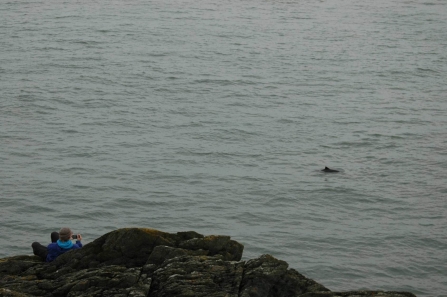Whales, dolphins and porpoises, collectively known as cetaceans, can be seen from nearly anywhere along the Welsh coastline, but rocky outcrops and headlands are particularly good spots to spend some time seawatching, particularly at this time of year when the weather for sitting patiently on a sea cliff is a little more reasonable. It’s well worth taking a picnic and heading to the coast to have a look for some of these creatures - even if you don’t see them it wouldn’t be a day wasted! For the best chance of seeing something head to the north coast of Anglesey or the Llŷn Peninsula. For me, the stretch of coast between Bull Bay and Cemaes on Anglesey has always been the best but there are plenty of other hotspots along the North Wales coast.
Here in North Wales Harbour Porpoises can be seen all year round. Bottlenose Dolphins are less commonly seen but are routinely spotted, often in large pods. The Risso’s Dolphin, a wonderful species to watch, can be seen toward the end of the Summer and hotspots include Bardsey Island on the Llŷn Peninsula. Minke Whales are occasional visitors.




